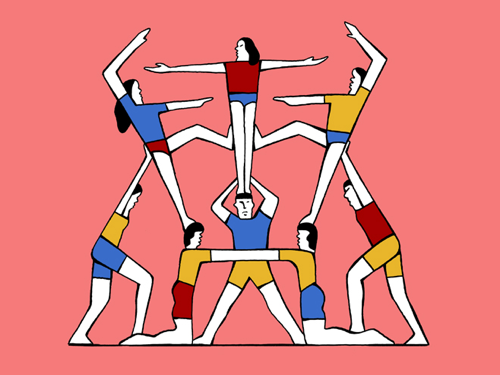HR Disrupted: It’s Time for Something Different by Lucy Adams
Jul 17, 2019
5 mins


HR Disrupted: It’s Time for Something Different (2017) is a clear and convincing HR workbook for new HR in a “disrupted world”. Its author, Lucy Adams, was HR director at the BBC during one of its most turbulent periods and witnessed first-hand how “broken” HR really is in most large organisations. When she left the BBC, she set out on a mission to “help organisations bring their HR departments into the 21st century”. To do so, she created her own agency, Disruptive HR.
A process-driven function that often ignores individuals, HR has not evolved together with business models, the economy and people’s aspirations. In a ‘VUCA’ world—volatile, uncertain, complex and ambiguous —HR must start catering to individuals, rather than processes designed for the mass economy. Lucy Adams provides HR professionals with a compelling case for changing HR and possible strategies to achieve change.
We must re-imagine our relationship with our employees, becoming slicker, faster, and more creative in our work with them.
“It seems to be getting harder, not easier, to make people work cross-functionally, and those pesky millennials won’t stop demanding more flexibility. We must re-imagine our relationship with our employees, becoming slicker, faster, and more creative in our work with them. Equipping our organisations to meet today’s demands requires something very different” - Lucy Adams in HR Disrupted.
Why traditional HR has become irrelevant
Lucy Adams lists all the reasons why old-style HR is about to die: technology is transforming our businesses; a company’s competitors aren’t who they used to be; workers have to live and work in a collaborative; networked world; and organisations are changing structurally. Companies will have to manage virtual teams and cope with the fact that their teams will be increasingly scattered and less likely to share the same physical space from 9 to 5.
Also, the workforce is shape-shifting. The ever increasing number of contingent workers is challenging the traditional approach to training and management. “In most companies, an employee would join, go onto the payroll and ‘belong’ to the organisation. It was a solid, dependable, loyal relationship on both sides”. Now a different form of relationship will have to be invented.
In most companies, an employee would join, go onto the payroll and ‘belong’ to the organisation. A solid, dependable, loyal relationship on both sides.
Most millennials want their job to come with purpose. They expect management to be customised to their specific needs. They demand autonomy and flexibility. Their expectations are spurring many changes which HR professionals must try to take heed of. But other age groups would also like to have their needs taken into account: as they grow older, workers may want to continue to work, but with lower stress and demands. Yet managers have traditionally associated age with more responsibilities and stress.
Last but not least our digital age is forcing increased transparency upon HR. The public are increasingly scrutinising leaders and finding them lacking. The rise of specialized social media and platforms mean company reputation has become a bit of a headache for HR. There is no stopping employees from speaking about their company online. Therefore it might be wiser to encourage them to go online. Spotify, for example, encourages their employees to say whatever they like on Glassdoor, which “fosters a huge amount of trust”.
The public are increasingly scrutinising leaders and finding them lacking.
What HR should be like: the EACH model
“In HR we must start treating our Employees as Adults, Consumers and Human beings (EACH)”. Historically employers have long been “Mum and Dad” for their employees, either caring and nurturing like a stereotypical mother figure or critical and harsh like a stereotypical father figure. “So much of what we do when we manage people at work, whether it be related to training, development or management, is based on this old-fashioned parent-child relationship”. But this parent-child relationship is all the more obsolete in a professional context ascompanies need their people to challenge authority, speak up and try new things if they hope to be more innovative.
At work, whether it be related to training, development or management, parent-child relationship is old-fashioned.
Our whole HR model has been designed in the industrial age and is based on the idea that better processes must be engineered for the company to be more productive. This process-driven approach to everything HR-related is now slowing down innovation and making the recruitment of new talent more difficult. Instead of preventing mistakes through processes, HR must now empower people to make mistakes. For Lucy Adams, everything must “start from a place of trust”: “when we trust our employees, they’re more likely to behave responsibly and be productive, creative, and forward-thinking”. Treating employees like adults has been Netflix’s ground-breaking HR motto for a decade and has been embraced by most Silicon Valley startups.
To treat our employees like consumers in our digital age
The digital revolution has brought about a new paradigm of personalisation whereby consumers are offered products and services tailored to their specific consumer profile. By using their favourite apps, they produce data and feed algorithms that make it possible to create unique tailor-made interfaces. Yet HR processes have often remained untouched by this revolution: they treat employees like “assets”, a homogeneous lump of interchangeable commodities. “Processes treat people as things, not humans.
Applied to HR, the digital revolution means the one-size-fits-all approach to employee management must be abandoned. HR leaders ought to develop a deeper level of insight into their people and design new policies centred on their ‘users’. Quantitative surveys and qualitative research can help HR become more user-centric. HR has a lot to learn from marketing!
We need to put the ‘human’ back into HR
“Whenever we in HR face a challenge, we typically create a process in response”. We tend to use more jargon and acronyms in times of crisis. The more employees need humanity, the less human HR departments actually are. In his book, Dan Pink showed that we humans are largely motivated at work by three things:
- autonomy,
- mastery,
- and meaning (a connection to something bigger than ourselves).
Whenever we in HR face a challenge, we create a process in response. The more employees need humanity, the less human HR departments actually are.
Yet we continuously use the wrong levers, like money, to motivate our employees. Intrinsic motivators (autonomy, mastery and meaning) are more powerful than extrinsic ones like money. That’s why bonuses provide negative incentives: they discourage teamwork and encourage the wrong kind of motivation. Rewarding only individual behaviour leads to less collaboration, a lack of willingness to help others, more isolation, and more selfishness. Individual rewards will be pursued by employees at the expense of the company’s general interest.
Making HR more human will require better leaders. Tomorrow’s leaders will need to become more resilient (confident and resourceful in an uncertain world), engaged (able to motivate people to be the very best they can be), curious (to find new ways of doing things), insightful (to spot connections between people or ideas) and humble(to foster trust).
Tomorrow’s leaders will need to become more resilient, engaged, curious, insightful and humble.
Lastly, more human HR policies require more honest relationships between employees and their managers. As explained by LinkedIn founder Reid Hoffman in his book The Alliance, the traditional employee-employer relationship is usually based on a series of dishonest conversations. Companies expect loyalty without committing to providing secure jobs in return, and employees leave as soon as something better comes along. “What a refreshingly adult-to-adult conversation it would be if a manager and an employee were able to sit down and have an open discussion in which both sides acknowledged the relationship would probably last a certain number of years and no more.”
How you can transform your HR department
- Build a strong quantitative and qualitative case for changing your HR processes.
- Develop a positive, trustful employer brand and build a two-way community of willing potential employees.
- Trust your employees and design all your policies from their perspective.
- Understand we all need an overarching to feel truly engaged with our work.
- Speak like a human and drop all business jargon in your communication with the team.
- Encourage mobility: create an environment in which people are free to move upwards, sideways, and even downwards, and encourage work rotations.
- Recognise the different needs of your employees at various times in their lives.
- Abandon the one-size-fits-all approach to leadership development and stop promoting highly skilled technical people into leadership roles for which they are ill-equipped.
- Focus more on the collective strengths of the team than simply on the individual: strong teams are what make a healthy, successful business thrive.
Illustration: Pablo Grand Mourcel
Follow Welcome to the Jungle on Facebook on LinkedIn and on Instagram and subscribe to our newsletter to get our latest articles every day!

More inspiration: Laetitia Vitaud
Future of work author and speaker

Age does matter, at work and in the White House
What we've learned from the 2024 presidential elections about aging at work.
Sep 09, 2024

Can companies avoid a brain drain as retirements surge?
Bye bye, Baby Boomers. Hello, knowledge exodus?
Jun 12, 2024

Workplace anxiety: Navigating the future of work in an anxious world
Anxiety has taken center stage in our modern world. How is it shaping the future of work? And most of all, what can we do about it?
May 20, 2024

Why recruiters should hire more ex-freelancers
While freelance and salaried work can seem worlds apart, they may have more in common than you think.
May 02, 2024

How women over 50 are reinventing their careers and the future of work
Women in their 20s struggle to be taken seriously, while middle-aged women battle discrimination... So how are women over 50 reinventing the wheel?
Apr 02, 2024
Inside the jungle: The HR newsletter
Studies, events, expert analysis, and solutions—every two weeks in your inbox

